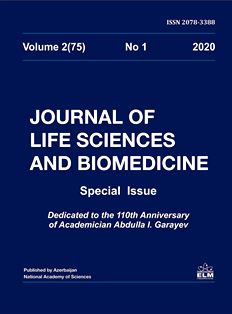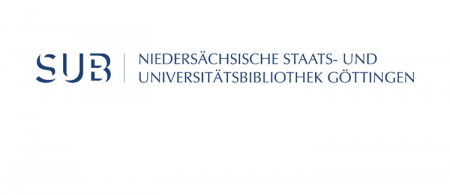
Study of changes in basic biochemical indicators of blood in the dynamics of development of modified alloxan diabetes in rats
Research article: Study of changes in basic biochemical indicators of blood in the dynamics of development of modified alloxan diabetes in rats
Author: Kh.R. Akhundova
Research Center and Department of Family Medicine, Azerbaijan Medical University,
Baku, Azerbaijan
Abstract: The article presents data on biochemical changes in the blood of experimental rats on the background of modified alloxan diabetes in dynamics. At the same time, there is a violation of the balance between the prooxidant system and the antioxidant defense system in the body, which is accompanied by insulin defi-ciency in varying degrees of severity. The arising oxidative stress in diabetes is a vicious cycle in connection with an increase in the sources of free radical formation, a weakening of the activity of the antioxidant system, which leads to tissue damage. Oxidative stress is accompanied by a decrease in the absorption and consumption of glucose by adipose tissue, impaired insulin secretion by β-cells, an increase in the rate of lipid peroxidation, which results in metabolic syndrome.
Keywords: alloxan trihydrate, diabetes mellitus, experimental rats, blood biochemistry
References
Ametov A.S., Solovieva O.A. (2011) Oxidative stress in type 2 diabetes mellitus and ways to correct it. Problems of Endocrinology, No. 6: p. 52-56.
Gavrilov V.B., Gavrilova A.R., Mazhul L.M. (1987) Analysis of methods for determining the products of lipid peroxidation in blood serum according to the test with thiobarbituric acid. Medical questions. Chemistry, No. 1: 118-122.
A. Sh. (2017) Oxidative stress in the pathogenesis of microlymph circulation disorders in diabetes mellitus. Bulletin of Kazakhstan, No. 1: 13-17.
Jafarova R.E. (2013) Comparative study of various models of alloxan-induced diabetes mellitus. Kazan Medical Journal, No. 6: 915-914.
Zakiryanov A.R., Plakhotsky M.A., Onishchenko N.A. (2007). Diabetic complications in rats during long-term modeling of type 1 diabetes mellitus. Pathological Physiology and Experimental Therapy, No. 4: 21-25.
Ivanov V.V., Shakhristova E.V., Stepova E.A., Zhavoronok T.V., Novitsky V.V. (2010) Lipid peroxidation and the glutathione system in the adipose tissue of rats with alloxan diabetes. Siberian Scientific Medical Journal, 30(#6): 101-104.
Korolyuk M.A., Ivanova L.I., Mayorova I.G., Tokarev V.E. (1988). Method for the determination of catalase. Laboratory business, "Medicine", No. 1: 16-19.
Mazhul L.M. (1987) Some indicators of lipid peroxidation in the blood of early age rats with alloxan diabetes. Issues of Medicinal Chemistry, No. 2: 41-44.
Cherkasova O.P., Kuznetsova N.V., Palchikova N.A., Selyatitskaya V.G. (2011) Activity of the adrenalocortical system in experimental diabetes in rats. Experimental Diabetology, No. 2: 37-40.
Baynes J.W., Thorpe S.R. (2000). Oxidative stress in diabetes. Antioxidants in diabetes man-agement. Ed.: L.Packer, N.Y. M.Dekker Inc., p. 77–92.
Chatzigeorgion A., Halapas A., Kalafatakis K., Kamper E. (2009) The use of animal models in the study of diabetes mellitus. In Vivo, 23(2): 245-258.
Elsner M., Gurgul-Convey E., Lenzen S. (2006) Relative importance of cellular uptake and reac-tive oxygen shecies for the toxicity of alloxan and dialuric acid to insulin-producing cells. Free Radic Biol. Med., 41: 825-834.
Etuk E.U. (2010) Animals models for studying di-abetes mellitus. Agric. Biol. J.N. Am., 1(2): 130-134.
Rice-Evans C. (1994) Total antioxidant status in plazma and blood fluids. Meth. Enzimol., 234(2): 279-293.
Selyatitskaya V.G., Cherkasova O.P., Pankina T.V., Palchikova N.A. (2008) Functional state of adrenocortical sistem in rats with manifest allox-aninduced diabetes mellitus. Bull. Exp. Biol. Med., 6: 708-710.
Viswanathaswamy A.H. (2011) Antihyperglyce-mic and antihyperlipidemic activity of plec-trathus amboinicus on normal and alloxainduced diabetic rats. Ind. J. Pharm. Sci., 73: 139-145.























